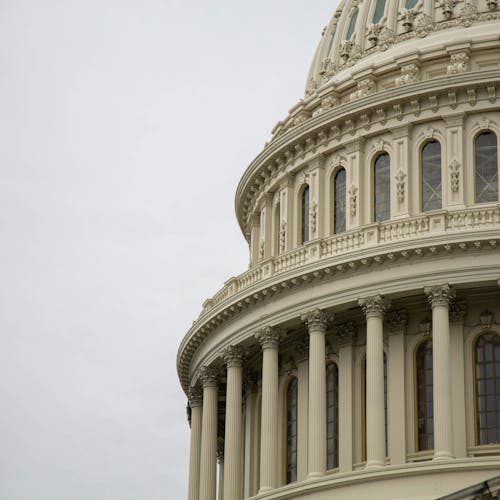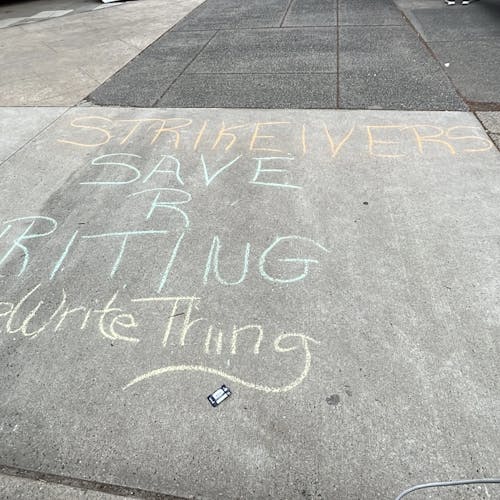Rutgers Athletics loses more than $36 million last fiscal year

Rutgers lost more than $36 million in the 2013-2014 fiscal year, a deficit more substantial than losing $1 every second of a typical calendar year, according to a March 2015 report by the University Senate’s Budget and Finance Committee.
After spending $76.7 million on Athletics, Rutgers lost nearly 50 percent of its expenses during the last fiscal year, a figure reflecting lost money initially supplied entirely by allocations of University discretionary funds and student fees, according to the report.
The Rutgers athletic program bears the highest cost to the rest of the University, said Thomas Prusa, chair of the Department of Economics.
“To try to do any sugarcoating of the magnitude of (this) financial loss is just not being honest,” Prusa said. “We’re No. 1 in financial losses ... by a mile, we lose more money than any other university on athletics.”
Rutgers Athletics is engaging in a financial arms race against other Big Ten schools by making decisions under the assumption that spending more money translates to winning more games. To say the University is operating at a net loss would be an understatement, Prusa said.
The only spillover benefit from the University’s athletic spending would be a perceived sense of pride in going to Rutgers because of the wins made by revenue-generating teams, Prusa said.
“There’s a direct cost imposed on students, that students don’t understand is (there),” he said. “We’re now in this better conference, and the reality is, we’re in a set of schools that have so much of a giant financial advantage (over Rutgers). It’s just a financial spending race.”
The decision to go into Division I athletics was made 15 to 20 years ago, and the University made considerable investments toward athletic facilities to do that, University President Robert L. Barchi said.
In an April 8 interview with The Daily Targum, Barchi said the University’s athletic spending deficit is likely to return to a neutral position by the first year Rutgers becomes a full member of the Big Ten conference.
“My commitment when I came here was to get us back into a cost-neutral situation in athletics, and that’s what I intend to do,” he said. “The key ingredient there was getting us into the Big Ten ... we are probationary members for a period of years and then we become full members.”
Rutgers’ athletic spending concerns more than simple dollars and cents, Barchi said. Neutralizing the deficit is a long process that cannot be catalyzed.
The University’s 40 percent increase in admissions applications from international students can be attributed to greater name recognition from Rutgers’ presence in the Big Ten, Barchi said.
Admissions applications increased by about 14 percent during the last application cycle, Barchi said. About 15 or 16 percent of applications were from students living outside of the Garden State, and much of that figure represents a Midwest demographic.
“Rutgers is getting a huge collateral value out of the advertising and the buzz of being in the Big Ten,” Barchi said. “If we were to not remain in the Big Ten, we would have a monumental financial disaster on our hands. So we’re very conscious of that.”
Rutgers’ increased global presence from Big Ten membership increases revenue to do what is necessary to prevent tuition hikes, Barchi said. Administrators also feel the need to satisfy the University’s alumni base, which is composed of many who are interested in intercollegiate sports.
“We raised a record number of dollars last year for athletics,” he said. “Athletics, over the course of our campaign, is close to 10 percent of the total revenue that we raised — $100 million — and we expect to see that go up.”
Institutional support was the greatest contributor to Rutgers Athletics’ revenue in 2014, adding $19 million, which translates to about 30 percent of revenue, according to the University Senate report. The projection for 2015 is a decrease to $17.5 million, translating to a slight drop of 25.2 percent.
Most Big Ten schools do not subsidize their athletic program through student fees at all, and Rutgers subsidized $10.323 million last year, a figure that is only on par with the University of Maryland’s $11.315 million subsidy.
Dollars generated by the student fee on term bills benefit every Olympic sport Rutgers has to offer aside from football and basketball, Barchi said. This is because those two sports are the only D1 Rutgers sports that are generating revenue or are revenue-neutral.
“You can’t ignore the fact that the dollars are coming in and focus only on the mathematical deficit that’s there,” he said. “Not a dime of the student fee goes to support football and basketball.”
Although he believes Barchi’s comments were sincere, Prusa said waiting for future improvement ignores the situation’s economic reality and will likely worsen the deficit.
If it somehow improves, it will not be a significant change in the right direction, Prusa said.
Even though Big Ten membership is beneficial for Rutgers, it became a problem because the Board of Governors adopted a mental “one-way spigot,” Prusa said. It will always justify spending more on Rutgers Athletics during times of both failure and success.
“When I arrived here in 1994 — shortly after we joined the Big East — that was being said,” Prusa said. “Here we are more than 20 years later being told the same thing, and it’s just gone in the wrong direction.”
Rutgers ended up on the wrong side of history nearly 250 years after it was founded because of a recent decision to channel financial allocations to the athletic program instead of academics, said Richard Vedder, director of the Center for College Affordability and Productivity.
Few schools have been successful in monetizing the development of a competitive athletic program, and Rutgers’ academics suffered from the University’s attempts to do so, Vedder said.
“It’s really hard to measure success, but one way to look at it is to look at reputations,” he said. “You look at things like rankings ... Rutgers (did) not hit a home-run with the last decade (because) of a moving of resources away from standard academic areas.”
The University’s reputation also suffered dramatically as a result of prioritizing the athletics while making executive financial decisions, Vedder said.
After investing about $250 million across the last decade, Rutgers fell 12 spots in college ranks, declining from No. 58 to No. 70, according to U.S. News and World Report.
Rutgers also fell to No. 177 on Forbes magazine’s Best Colleges list — a collection of 650 liberal arts colleges and universities — a spot that gives the College of New Jersey a nine-rank advantage over the Garden State’s flagship state university.
There are less than 10 schools in the United States that date to the 18th century, and Rutgers is one of two public universities that has a historical relationship with Ivy League schools, Vedder said. The other institution is the College of William and Mary.
Rutgers would likely have a better academic reputation if the administration reallocated its athletic funds to improve how the University markets its rich colonial heritage, Vedder said.
“When people think of Rutgers, they think of the state university of New Jersey, not the cousin of Princeton,” he said. “There’s a certain prestige associated with being old and being around a long time — and having a rich history.”
In the wake of the athletic program’s multimillion-dollar loss, Rutgers administrators developed a long- term plan spanning the 2013-2014 to 2021-2022 fiscal years, according to the University Senate report.
Throughout the plan’s implementation, Rutgers Athletics is expected to run deficits each year up to and including the 2021-2022 fiscal year, with a cumulative financial loss of more than $183 million — an additional $150 million lost when compared to the most recent loss, according to the report.
The cumulative deficit will be funded by University discretionary funds and siphoned student fee allocations channeled into athletics, with the latter expected to grow 2 percent each year up to and including the 2021-2022 fiscal year, according to the report.
The plan is heavily reliant on projected increases in revenue from ticket sales, marketing, donations and distributions from the Big Ten and NCAA for tournaments and media rights –– with a contract due for renewal in 2016, according to the report.
“That’s what we have to do, and then we’ll have dollars from our operating budget that might have gone on to be providing some (support) to athletics that can be put back into operations,” Barchi said. “This is not a process you can magically speed up.”
While University initiatives might be successful in gradually reducing the athletic spending deficit, the spending is likely to continue as Rutgers Athletics seeks to improve in athletic rank, Vedder said.
The perceived need to constantly climb the ranks of intercollegiate athletics will probably translate to greater spending for high-salary coaches, new indoor practice facilities and other institutional upgrades of that nature, he said.
It would not be far-fetched to suggest Rutgers Athletics will become a beast that can never be fed enough money, Vedder said. It is also likely that every improvement in athletic rank will encourage more spending to keep climbing the ladder.
“The needs of the athletic director are seemingly insatiable,” he said. “They will claim that they should have a claim on some of that incremental money ... The arms race will continue.”
Diverting a considerable amount of financial resources from “Job One” –– teaching, research and infrastructure –– goes completely against the moral responsibility of universities to expand minds and stimulate learning, Vedder said.
“(Higher education) is more about expanding minds than throwing balls,” he said. “Throwing balls is something that’s done at recess during elementary school ... why is throwing balls even at the slightest relevance to expanding the mind?”
Without some form of external force, it is unlikely that Rutgers officials will reallocate University funds toward improving academics, or even reducing the athletic spending deficit, Vedder said.
“At some point, enough is enough,” he said. “There’s a tendency (that) once you get into something big and you start spending lots of money on it, you don’t want to admit defeat ... that’s human nature, that’s how things go.”
Dan Corey is an Associate News Editor for The Daily Targum. He is a Rutgers Business School first-year student majoring in marketing and journalism and media studies. Follow him on Twitter @danielhcorey for more stories.
Editor's Note: The featured graphic includes the Iowa State University logo while reporting athletic expenditures for the University of Iowa.



